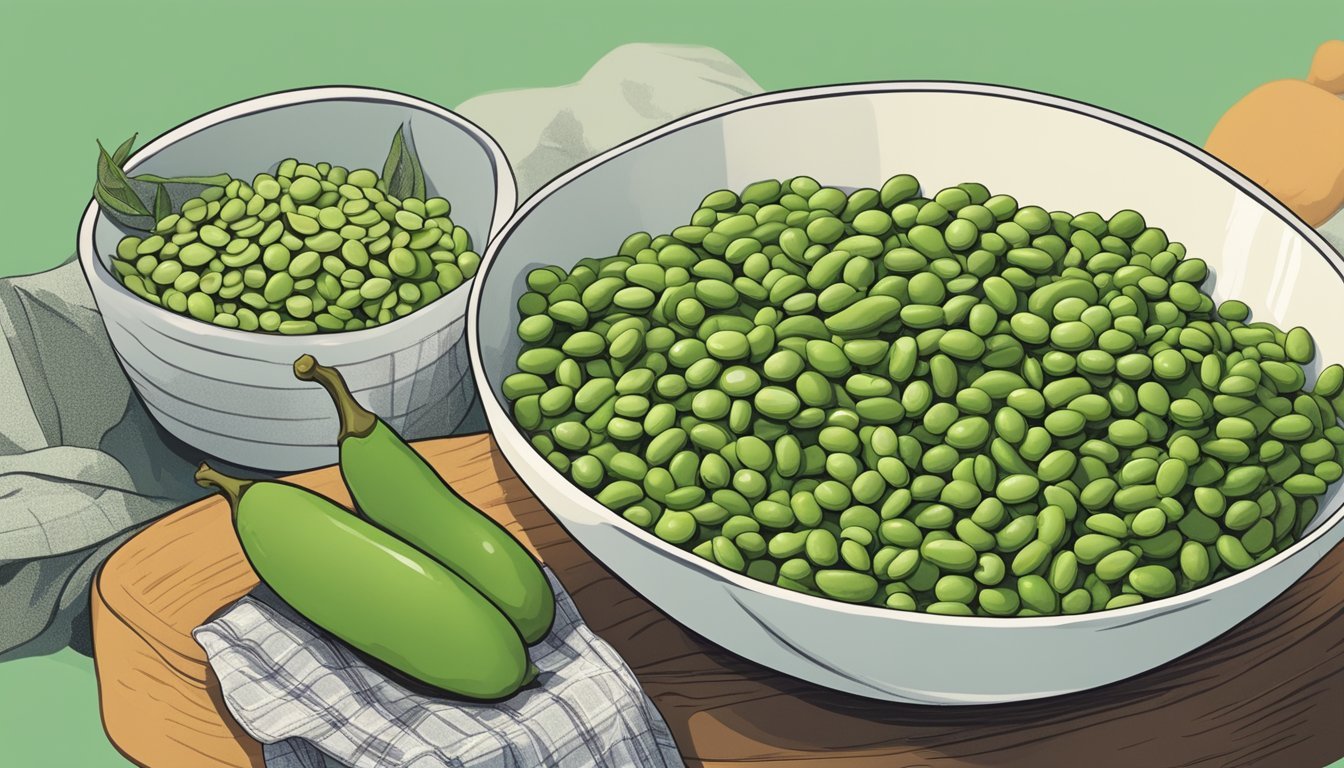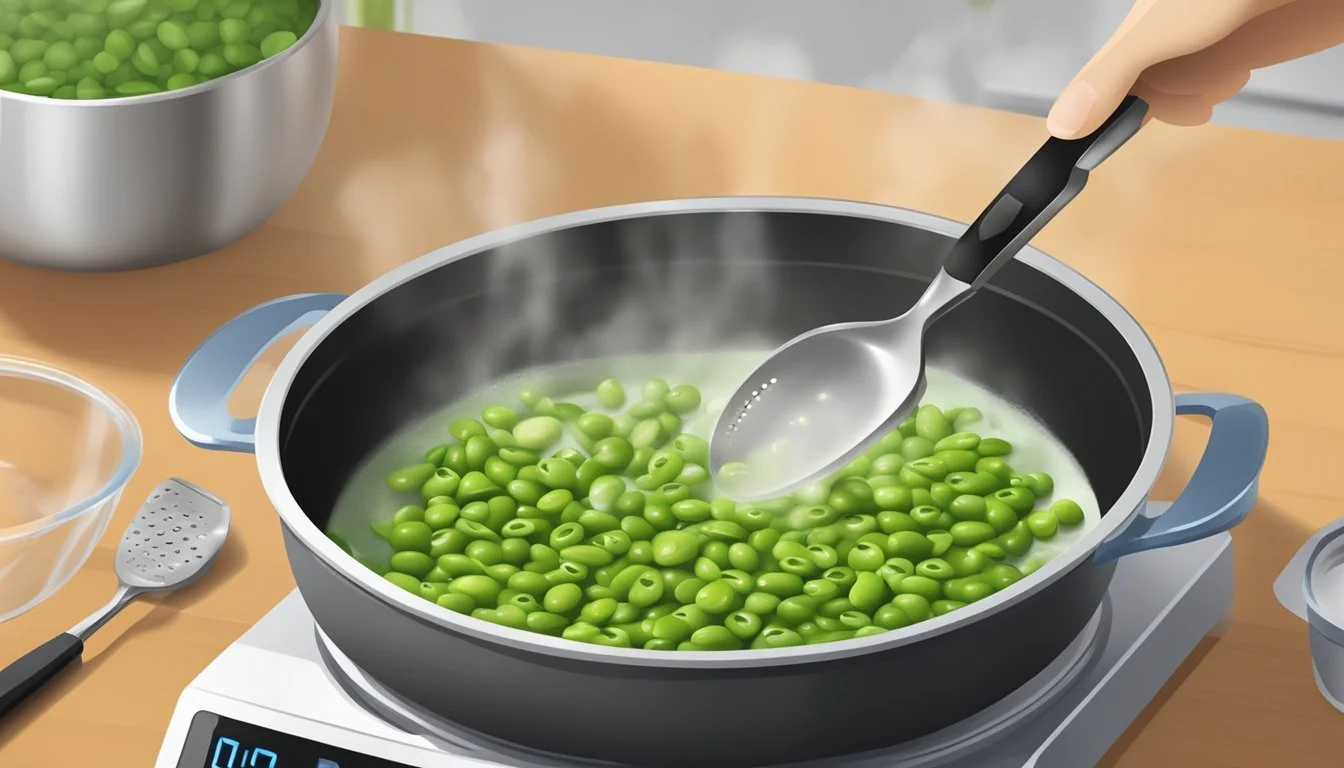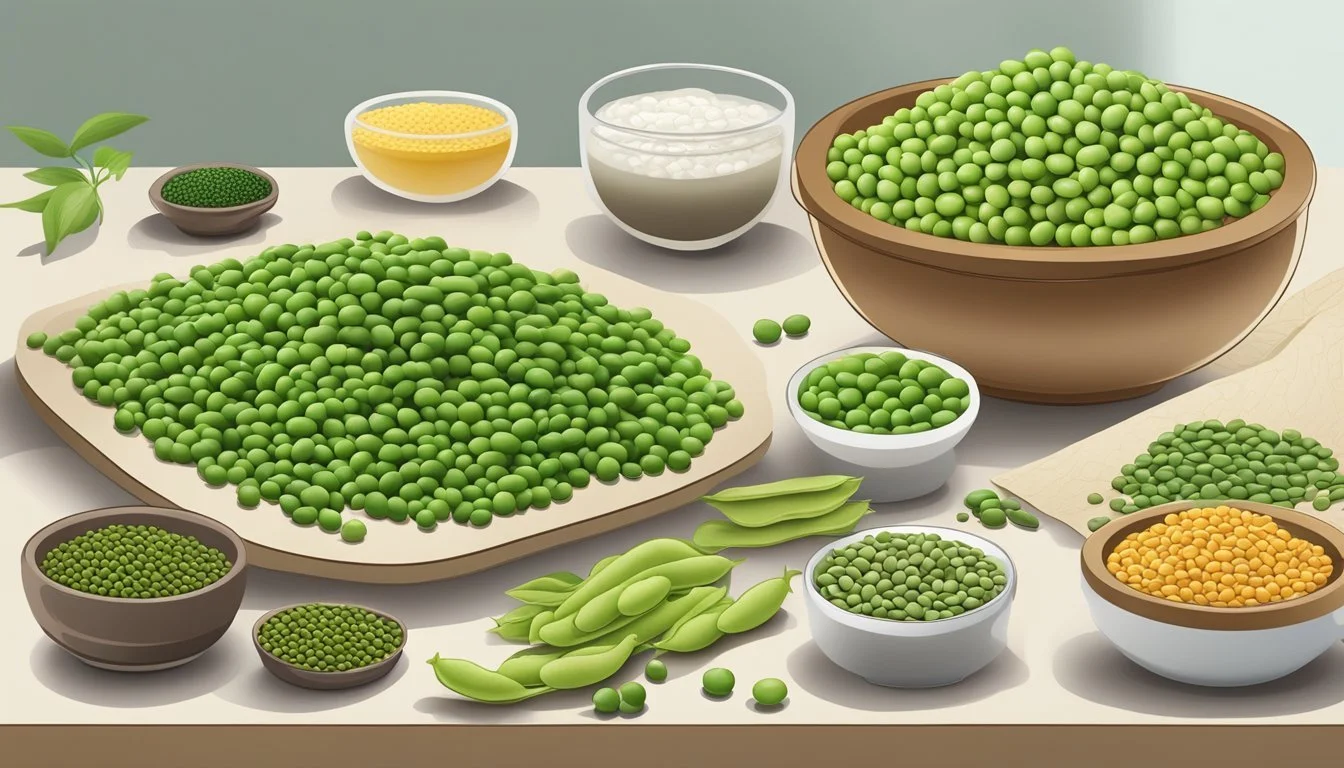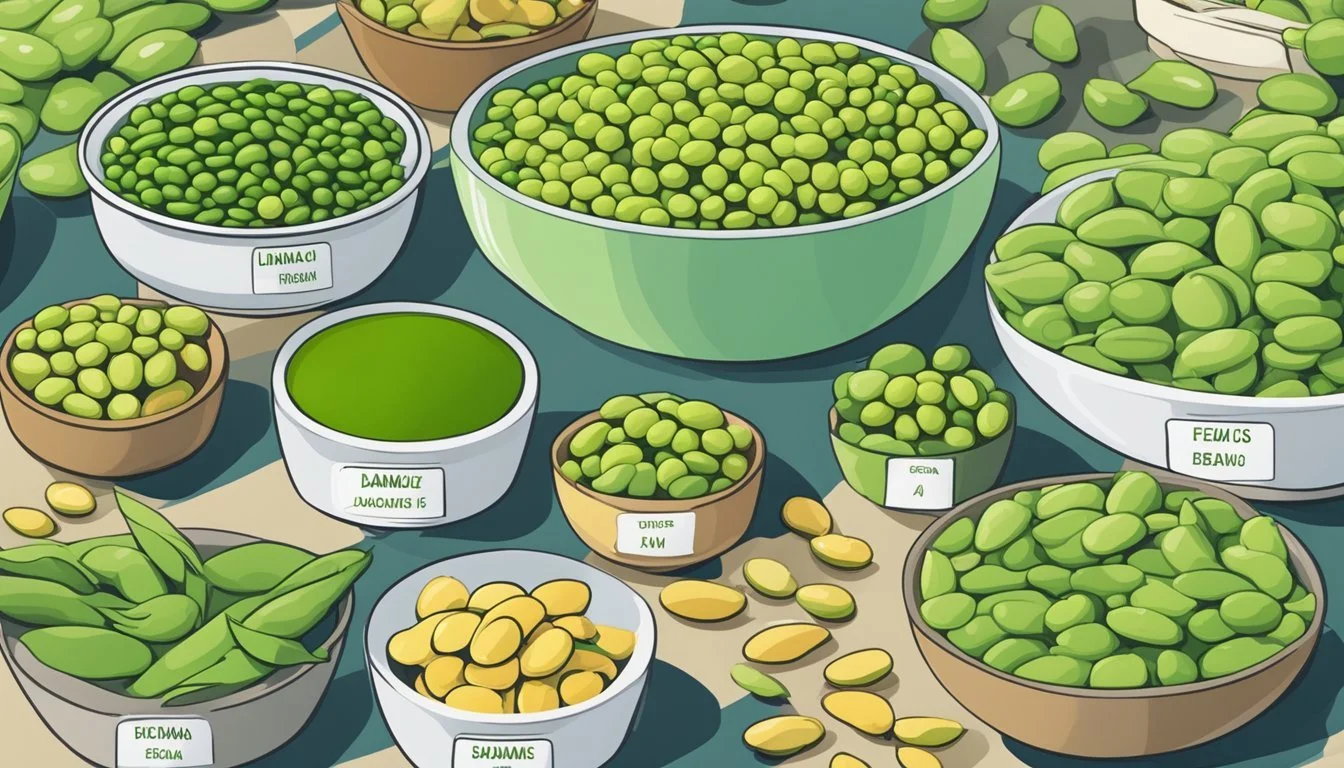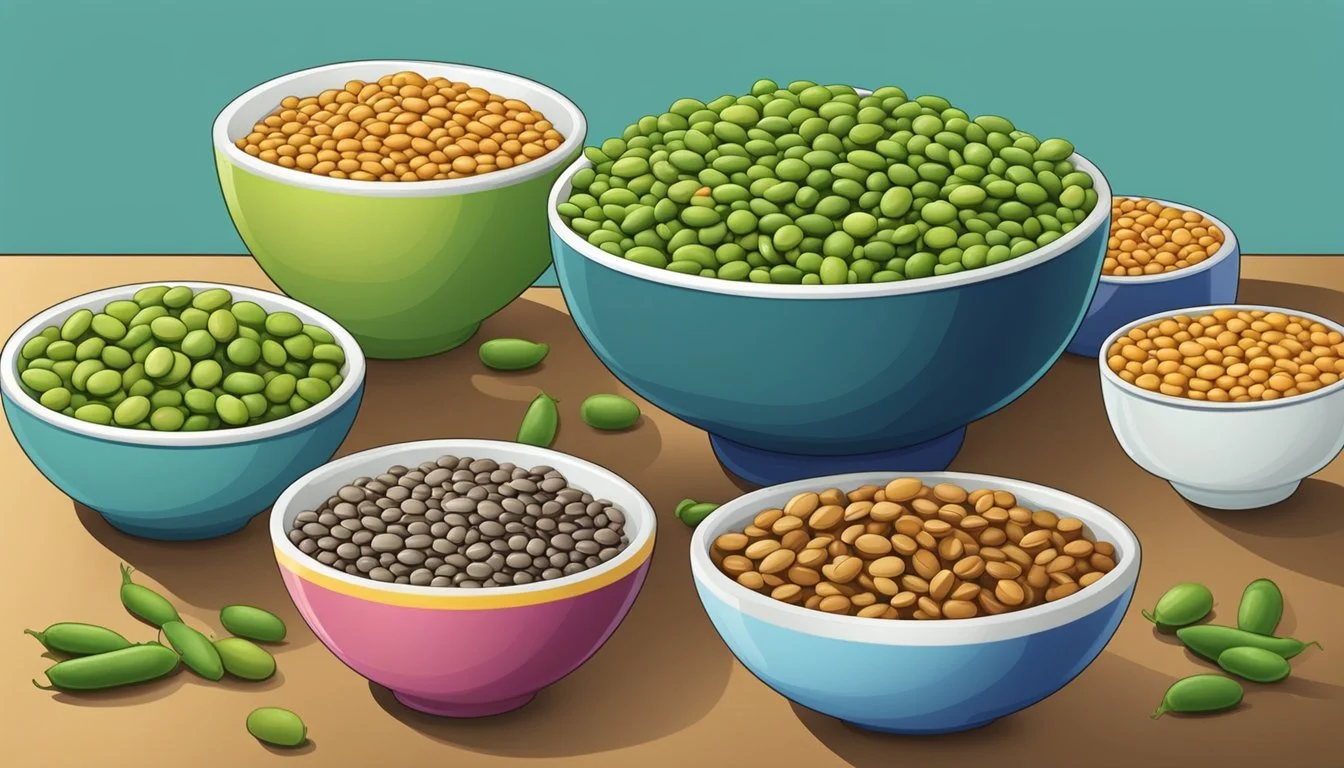Edamame Substitutes
Optimal Alternatives for Your Recipes
Edamame, often known as young soybeans, are a popular component in many dishes due to their nutty flavor and versatility. Typically harvested before reaching maturity, these green legumes are a staple in Asian cuisine and are commonly found in grocery stores worldwide. They are not only a great source of protein but also rich in fiber, vitamins, and minerals. Despite their widespread popularity, some people may seek alternatives to edamame due to dietary restrictions, availability issues, or simply for the sake of variety in their cooking.
Fortunately, there are several substitutes that can mimic the texture and taste of edamame. Among the various options, green peas, fava beans, and lima beans are excellent choices that blend well in dishes that traditionally include edamame. These substitutes are beneficial for those looking for similar nutritional value, as they are also high in protein and fiber. Each alternative brings its unique taste and textural nuances to a dish, allowing for culinary experimentation and personalization.
Inclusion of these substitutes in recipes is straightforward. For a direct swap, most can be used in equal measure to edamame, making the transition seamless for recipes like salads, stir-fries, and soups. The goal is not only to replace edamame but to maintain the integrity and flavor profile of the dish while introducing new elements that complement the overall taste.
Understanding Edamame
Edamame beans, often associated with Japanese cuisine, are young soybeans harvested before they have ripened. They offer a rich nutritional profile, have a variety of culinary uses, and are known for their distinctive texture and flavor.
Nutritional Profile
Edamame beans boast an impressive nutritional composition, making them a valuable part of a balanced diet. They are particularly noted for their high protein content, with roughly 18 grams of protein per one cup of cooked beans. This soybean is also rich in fiber, which promotes good digestive health. Its vitamin and mineral content includes vitamin K, folate, and manganese, elements crucial for bone health and metabolic functions. Edamame also contains beneficial antioxidants that help protect the body from oxidative stress.
Culinary Uses
In the culinary context, edamame serves multiple purposes. They can be found as a standalone snack, boiled or steamed and sprinkled with salt. Their versatility also allows them to be integrated into a variety of dishes, ranging from salads and soups to stir-fries and sushi accompaniments. Because of their firm texture, they hold up well during cooking, making them an excellent ingredient for both hot and cold meals.
Unique Texture and Flavor
The texture of edamame is characteristically firm and slightly chewy, a unique contrast to other beans like green beans which are softer. Its flavor is distinctively nutty with a touch of sweetness, setting it apart from the earthy taste of other legumes. The inherent nuttiness and gentle sweetness contribute to its popularity as a snack and as a culinary ingredient that can complement various flavors without overpowering them.
Popular Edamame Substitutes
When searching for an appropriate substitute for edamame, one should consider alternatives that provide a similar texture and flavor. The following selections are among the most popular substitutes, widely recognized for their comparable characteristics to edamame.
Green Peas and Sugar Snap Peas
Green peas serve as a close alternative to edamame, offering a similar texture and subtle sweetness. Rich in fiber, vitamins, and minerals, they are a nutritious substitute that can be used in recipes at a 1:1 ratio. Sugar snap peas, encased in an edible pod, add a satisfying crunch and can be enjoyed raw or cooked, maintaining the bright and fresh qualities of edamame.
Fava Beans and Lima Beans
Fava beans, also known as broad beans, have a creamy texture and a slightly nutty taste that pairs well with an assortment of dishes. They are a staple in various cuisines and can replace edamame especially in cooked recipes. Lima beans are another alternative with their buttery flavor and soft texture, akin to the smoothness of edamame when cooked.
Chickpeas and Garbanzo Beans
Chickpeas, or garbanzo beans, are versatile substitutes for edamame with their distinctively firm texture and nutlike taste. They can be incorporated into salads, soups, and spreads, and are also the primary ingredient in hummus, thus offering a different dimension to dishes traditionally made with edamame.
Substitute Considerations
When choosing a substitute for edamame, one must consider how the flavor profile, texture, and nutritional content will align with or differ from the original ingredient.
Flavor Profiles
Different substitutes offer varying degrees of sweetness, nuttiness, and earthy flavors. Snow peas provide a slightly sweet flavor that complements dishes similarly to edamame. Chickpeas have a nutty taste, while lima beans offer a more earthy flavor, making both adequate replacements in terms of taste.
Texture Comparisons
The texture of a substitute is crucial for maintaining dish integrity. Edamame presents a firm texture that is often desired. Snow peas, with their crisp texture, can mimic this crunch. Both chickpeas and lima beans offer a firmer texture, though chickpeas can be made crispier through roasting, aligning them closer with edamame's bite.
Nutritional Differences
Substitutes may have different nutritional profiles than edamame. For those seeking a creamy texture, mashed avocado combined with sour cream can replace edamame dip; however, it contains more fat. Chickpeas and lima beans are both nutritionally dense, offering protein content akin to edamame but varied in other micronutrients and calorie counts.
Substitute Applications in Recipes
When incorporating substitutes for edamame in various dishes, it's crucial to consider how their texture and flavor will blend with other ingredients.
Salads and Side Dishes
Green peas and sugar snap peas offer a crisp texture and a slightly sweet flavor, making them excellent edamame substitutes in salads. Chickpeas, another alternative, can be used in a 1:1 ratio to edamame; they bring a nuttier taste to grain-based or green salads. For side dishes, one can try a mix of green beans or lima beans to mimic the firmness and color of edamame.
Soups and Stews
In soups and stews, substitutes need to stand up to prolonged cooking without losing their structure. Fava beans come close to the firm, hearty quality of edamame, making them suitable for various broths. Lima beans are another robust option, offering similar nutritional benefits and a buttery texture that enhances the richness of stews.
Stir-Fries and Asian Dishes
Stir-fries and Asian dishes often call for a quick cooking process where substitutes must retain a desirable crunch. Snow peas work well, as their flat pods and crisp profile can handle high-heat sautéing. For noodle or rice dishes, one might use roasted chickpeas or boiled green peas as topping alternatives that distribute evenly and add a pleasant bite.
Preparing and Cooking Substitutes
When preparing edamame substitutes, one must consider the cooking method and flavor enhancements to achieve a result comparable to the original bean. It is essential to handle these substitutes properly to retain their nutritional value and texture.
Steaming and Boiling
Steaming and boiling are common methods for preparing bean substitutes such as green peas and lima beans. To achieve a texture similar to edamame:
Green peas: Steam for 1-2 minutes or boil for 2-3 minutes.
Lima beans: Boil for about 10 minutes, or until tender.
Seasoning and Flavor Enhancements
The use of seasonings and oils can greatly enhance the flavor of edamame substitutes:
Start by lightly coating beans in olive oil before heating, to prevent sticking and add richness.
Garlic can be minced and added for a aromatic flavor; a small amount of 1/2 teaspoon per cup of beans is sufficient.
Other Cooking Methods
Besides steaming and boiling, edamame substitutes can be prepared using various other cooking techniques:
Sautéing: Quickly cook beans in a hot pan with olive oil for a more intense flavor.
Baking: Spreading beans on a baking sheet and baking at 375°F (190°C) until slightly crispy can provide a different texture and taste.
Shopping Guide for Substitutes
When looking for edamame substitutes, shoppers should know where to look, the types of alternatives available, and how to select the highest quality options.
Supermarket Sections
In most supermarkets, shoppers will find a variety of edamame substitutes in specific sections. Fresh alternatives, such as green peas, sugar snap peas, and green beans, are typically located in the produce aisle. For those searching for fava beans or lima beans, they can frequently be found both in the produce section and in the canned goods aisle. Additionally, chickpeas and mukimame (shelled edamame) might be located in the international or health food aisle.
Fresh vs. Frozen Options
Edamame substitutes come in both fresh and frozen forms:
Fresh options include:
Green peas
Sugar snap peas
Green beans
Fava beans
Lima beans
Italicized items are notable for retaining a similar crunch and flavor to edamame when cooked.
Frozen substitutes can often offer more convenience and a longer shelf life. Shoppers will typically find these in the frozen section or freezer aisle, where they can look for:
Frozen green peas
Frozen lima beans
Frozen mixed vegetables that contain some of these substitutes
Identifying Quality Substitutes
When selecting quality substitutes for edamame, shoppers should look for:
Freshness: Fresh produce should have a vibrant color, firm texture, and no signs of wilting or bruising.
Packaging: For frozen options, ensure that the package is free from ice crystals or frost, which can indicate that the product has been thawed and refrozen.
Organic Options: Those preferring organic products will find them both in the fresh produce section and the freezer section, typically labeled with an organic seal.
Health Considerations and Benefits
Edamame beans offer a plethora of health benefits due to their rich nutritional profile. They are particularly noteworthy for their fiber content, which aids in digestion and can help maintain a healthy weight by promoting a feeling of fullness.
Edamame's fiber content:
Contributes to heart health
Plays a role in stabilizing blood sugar levels
Enhances gut health
Moreover, edamame has a low glycemic index (GI), making it a suitable choice for those managing their blood sugar levels, such as individuals with diabetes or insulin resistance.
Importance of a low glycemic index:
Prevents rapid spikes in blood sugar
Supports sustained energy levels
Compatible with various dietary needs
Another significant nutrient found in edamame is Vitamin K. This vitamin is essential for many bodily functions but is particularly important for bone health and blood clotting processes.
Health benefits of Vitamin K:
Improves bone density
Reduces the risk of fractures
Aids the body’s natural healing processes
Individuals considering edamame as a dietary option should also acknowledge its high-quality plant protein, making it an excellent choice for vegetarians and vegans. The protein contributes to muscle repair and growth, ensuring that edamame is not only a nutritious substitute but also a beneficial one for overall health and well-being.
Frequently Asked Questions (FAQs)
Can green peas be used as a substitute for edamame?
Yes, green peas are a common substitute. They can be used in a 1:1 ratio when replacing edamame in recipes.
What is the nutritional difference between edamame and its substitutes?
Edamame typically has higher protein content compared to green peas or lima beans, but all are good sources of fiber and vitamins.
Are all edamame substitutes suitable for vegetarians and vegans?
Most common substitutes, such as green peas, lima beans, and snow peas, are plant-based and suitable for both vegetarians and vegans.
How do textures vary among edamame and substitutes like green peas?
Edamame has a firmer, more bean-like texture, while green peas are softer. Lima beans have a creamy texture, similar to edamame.
What is a good substitute for edamame in stir-fries or soups?
Snow peas are ideal for stir-fries and soups due to their crisp texture and slightly sweet flavor, closely mimicking the experience of edamame in such dishes.
Conclusion
When looking for a fitting edamame substitute, one has numerous options readily available. These alternatives are not only versatile but also maintain the texture and nutritional profile similar to that of edamame. They include:
Green peas: Known for their sweet taste and easy preparation.
Fava beans: Offer a buttery texture and are packed with protein.
Lima beans: Provide a starchy yet delicate flavor.
Chickpeas: Notably versatile, usable in a variety of dishes.
Mukimames: Closely related to edamame, they serve as a direct replacement.
Sugar snap peas: Add a crisp texture and a sweet note to dishes.
Green beans: Serve as a suitable option with a convenient crunch.
Individuals can often use these substitutes in a 1:1 ratio with edamame, ensuring a seamless transition in recipes. For those seeking a non-bean alternative, items like roasted chickpeas or boiled eggs might be suitable, especially when a protein-rich ingredient is imperative.
These alternatives are not only easy to find but also contribute to the diversity of flavor and nutrition in one's culinary endeavors. Whether one opts to boil, roast, or incorporate them into dishes like hummus, these substitutes prove to be reliable and adaptable selections for both the home cook and the professional chef.


